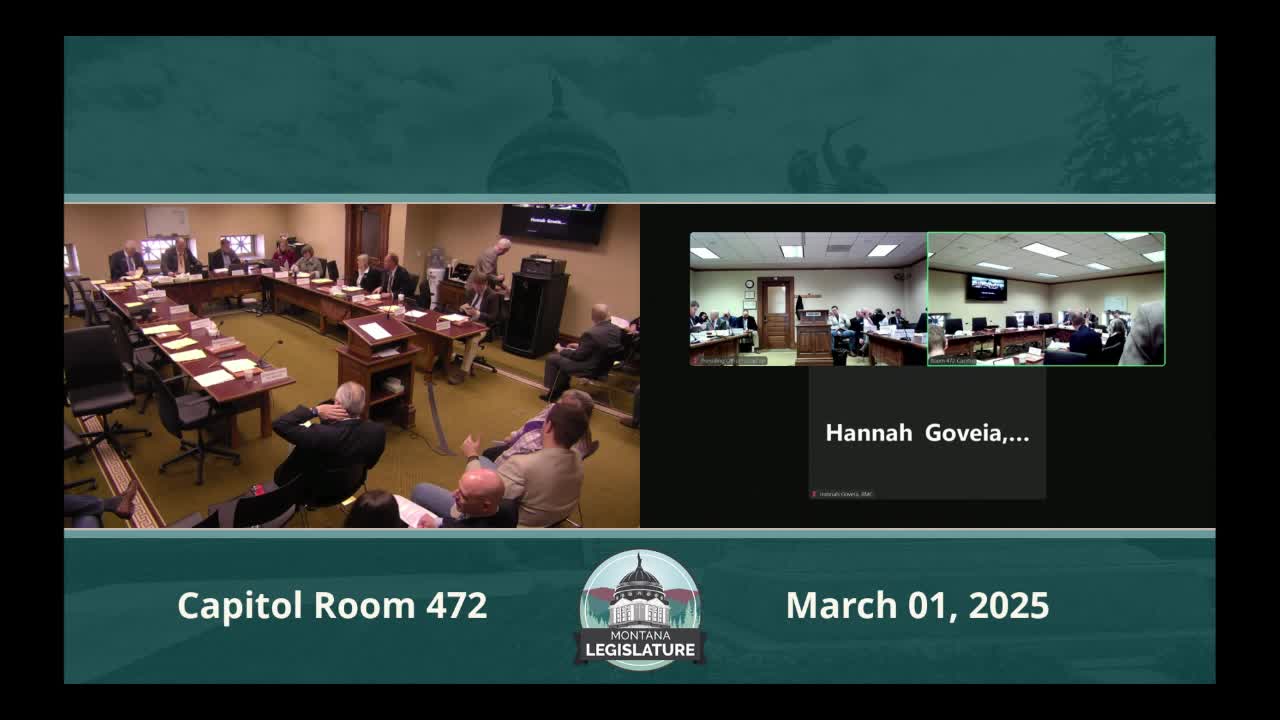Bill would allow nutrient offsets, letting dischargers fund watershed projects instead of costly plant upgrades
March 01, 2025 | 2025 Legislature MT, Montana
This article was created by AI summarizing key points discussed. AI makes mistakes, so for full details and context, please refer to the video of the full meeting. Please report any errors so we can fix them. Report an error »

Representative Steve Fitzpatrick, House District 24, opened the hearing on House Bill 736, which would revise the Montana Water Quality Act to permit nutrient offsets that deliver a net decrease in watershed nutrient loading. Fitzpatrick said the bill aims to give regulated point sources alternatives to expensive treatment upgrades by enabling offsets such as riparian fencing, wetland development, or septic‑system removal.
Industry and local governments rose in support. Matt Vincent (on behalf of the Montana Mining Association) said offsets let point sources address unregulated nonpoint pollution and could be far less costly than major treatment plant investments. Ed Coleman, deputy public works director for the city of Helena, provided a map of the Prickly Pear Creek watershed and testified that municipal upgrades could cost tens of millions of dollars; he urged tools that produce measurable results in the creek at lower cost.
Other supporters included the Montana Coal Council, the Montana Petroleum Association, Treasure State Resources Association, and the Montana League of Cities and Towns. Jennifer Olson of the League emphasized adaptive management and voluntary agreements with landowners and said the bill could allow municipalities to address nonpoint sources without forcing landowners to participate.
Sonya Nowakowski, director of the Department of Environmental Quality, testified in support of the bill’s concepts but said statutory language needs work; DEQ offered to help refine provisions and said existing DEQ guidance (Circular DEQ‑13 and a 2016 load‑reduction estimation guide) could support offsets. Nowakowski and other witnesses discussed monitoring, verification, and the need for defensible offset ratios; DEQ estimated implementing offsets would require one full‑time equivalent staff position and roughly $15,000 per year for lab services.
Derf Johnson of the Montana Environmental Information Center said he was open to the concept but called the bill too “bare bones” as drafted: he asked for retained numeric standards, improved load‑offset methods grounded in best science, and robust monitoring and verification.
The sponsor closed by thanking supporters; no committee vote on HB 736 is recorded in the transcript.
Industry and local governments rose in support. Matt Vincent (on behalf of the Montana Mining Association) said offsets let point sources address unregulated nonpoint pollution and could be far less costly than major treatment plant investments. Ed Coleman, deputy public works director for the city of Helena, provided a map of the Prickly Pear Creek watershed and testified that municipal upgrades could cost tens of millions of dollars; he urged tools that produce measurable results in the creek at lower cost.
Other supporters included the Montana Coal Council, the Montana Petroleum Association, Treasure State Resources Association, and the Montana League of Cities and Towns. Jennifer Olson of the League emphasized adaptive management and voluntary agreements with landowners and said the bill could allow municipalities to address nonpoint sources without forcing landowners to participate.
Sonya Nowakowski, director of the Department of Environmental Quality, testified in support of the bill’s concepts but said statutory language needs work; DEQ offered to help refine provisions and said existing DEQ guidance (Circular DEQ‑13 and a 2016 load‑reduction estimation guide) could support offsets. Nowakowski and other witnesses discussed monitoring, verification, and the need for defensible offset ratios; DEQ estimated implementing offsets would require one full‑time equivalent staff position and roughly $15,000 per year for lab services.
Derf Johnson of the Montana Environmental Information Center said he was open to the concept but called the bill too “bare bones” as drafted: he asked for retained numeric standards, improved load‑offset methods grounded in best science, and robust monitoring and verification.
The sponsor closed by thanking supporters; no committee vote on HB 736 is recorded in the transcript.
View full meeting
This article is based on a recent meeting—watch the full video and explore the complete transcript for deeper insights into the discussion.
View full meeting
